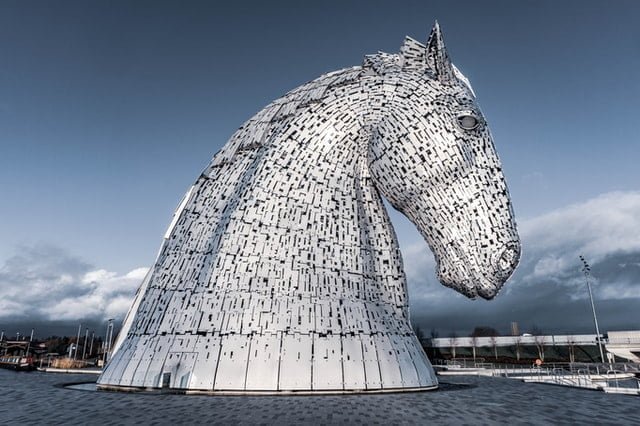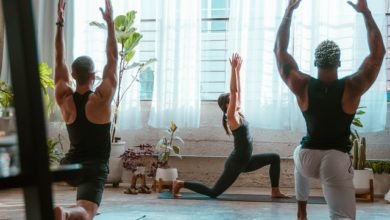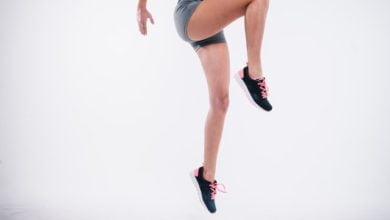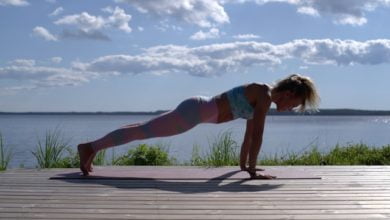How do horses sleep? Learn their sleeping habits

How do horses sleep? Learn their sleeping habits
Horses’ sleep patterns differ from those of animals and humans. In contrast to human sleep, which takes about eight hours a day, horses take shorter naps. These include periods of lying down during the day and a little deep sleep at night.
Also, how much a horse sleeps depends on its age. Young ponies, for example, take frequent naps until they reach three months. Adult horses prefer standing rather than lying down. Older horses are more likely to lie flat rather than sleepy while standing.
Keep reading to gain insight into your horse’s sleep system.
How does a horse sleep?
Mature horses can rest while standing, although this position deprives them of deep sleep. Thus, the horse must relax all the skeletal muscles to achieve a deep sleep. Nothing like this can happen when an animal stands on its own two feet.
If horses sleep while standing, the hind limb survival device is activated. You may be wondering what this mechanism is and how an animal can fall asleep in an upright position. It all began a long time ago when wild horses roamed the vast plains in herds.
As prey animals, horses have been frequent targets of predators looking for abundant, tasty meat. Thus, horses have developed a so-called survival apparatus, which enables them to remain alert and get up quickly. Thanks to their unique anatomy, different types of horses have survived for thousands of years.
The mechanism consists of tendons, ligaments, and muscles. Working together in harmony, they allow animals to sleep without collapsing. The process begins when the horses’ knee caps are offset and the hind legs are locked in a standing position. Once the joints are secured, the horse can fall asleep and relax its muscles.
Although it may seem painful, this does not cause problems for horses. In addition, the device will work in only one rear end, while the front and second leg will remain relaxed. After some time, the horse changes its legs so that it is completely rested. To many, a straight horse may seem like it’s leaning.
Horses will only lie flat when they are in a deep sleep. REM sleep usually occurs several times at night. What’s more, a horse will only sleep while lying down when it is provided with a comfortable, safe surrounding. Thus, it is necessary to arrange a dry shelter (a booth or a shed) and allow your horse to roam peacefully.
sleep length
Healthy foals tend to sleep more frequently because they are very active when they wake up. As a result, foals can spend half the day to make up for lost energy. Hence, owners should make room for their foals to lie down and rest for extended periods.
As for adult horses, they need less sleep. They need two to five hours a day to get enough rest. Although most of this time they will be in a slow drowsiness, horses also experience REM or REM sleep. For this species, the horses must lie down.
Actual deep sleep will occur at night. Horses need a minimum of 30 minutes and a maximum of three hours in 24 hours to meet their deep sleep needs. In addition, they must lie down for up to 45 minutes to fall into REM sleep for 20 minutes at a time.
In general, the type and length of sleep depends on workload, diet, temperature, and gender. In addition, the older a horse is, the more he needs to nap to get refreshed.
Sleeping positions explained
The claim that horses sleep with their feet on the ground is only part of the puzzle. We will explain both stages of sleep that horses experience daily to get enough rest.
1. stand up
Like humans, horses go through different sleep cycles. The first type includes naps, often referred to as slow wave sleep. The second type is REM or rapid eye movement sleep. At this point, horses can dream, and it takes longer to wake up.
Slow wave sleep occurs while the horse is standing. Thanks to the unique skeletal system discussed above, horses can hold themselves upright without overworking the muscles.
2. lie down
No horse can achieve deep sleep when standing because the body must remain completely relaxed. For this reason the clamping device cannot provide sufficient relaxation and is only part of the process. Furthermore, in the state of REM sleep, horses lose control of muscle function.
Also, it is not uncommon for horses to move and wake up during sleep. Most owners would agree that horses usually sleep best after midnight and when it gets completely dark.
The reason REM sleep occurs in short 20-minute bursts is due to horse anatomy. As a result of its size, blood flow cannot reach all vital organs if the horse is lying down. Thus, a healthy horse cannot lie flat for more than 45 minutes. You should get up, stretch, and take another round of sleep later.
3. Sleeping habits
In hot weather, horses prefer to lie down and lie in the sun. Therefore, it may seem as if they are lazy when it is hot outside. Watching horses take frequent naps under shaded areas is not a rare sight either. In snowy and windy conditions, horses spend fewer hours lying down.
You can often notice that two horses remain standing while the herd is resting. This natural behavior has roots in the past. Some horses have always had to stay alert to protect others from predators in the wild.
How do you know that the horse sleeps?
Horses lie flat when sleeping deeply, so you can’t misinterpret it as something else. You may often realize that your horse is having dreams if its legs begin to tremble.
Conversely, spotting which horse is sleeping can be more difficult but not impossible. In this case, the animal transfers its body weight on both its feet and its hind limb. The other leg will rest and remain slightly elevated with the tip of the hoof touching the ground.
Most often, the neck and head are bent down. The ears will remain relaxed. Your horse will also close his eyes and flick or droop his lower lip. Finally, if you have the impression that the animal is leaning on its hip, it is likely that it is falling asleep.
Why is deep sleep necessary?
Although horses rest partially while standing, they should lie down to get enough asynchronous sleep. Repeated bouts of deep sleep are essential to the horse’s nervous system and learning new things. REM sleep also helps horses stay calm, focused and create memories.
Strong rest will enhance the horse’s well-being and affect its overall performance. Hence, proper care and making sure your equine friend gets enough sleep is essential. Above all else, owners should always provide a safe environment for horses to rest.
They should also check if the booth is too noisy, cold or hot and eliminate typical stressors. Other reasons why a horse may not sleep enough include isolation and confined spaces. Unfamiliar and unsafe areas can prevent your horse from resting well.
Consequences of sleep deprivation
Lack of sleep will distort a horse’s eating patterns, physical form, and overall performance. A sleep-deprived horse will soon become weak, heavy-eyed, and unable to control its body temperature. Although the animal may consume more food than usual, it can still lose weight.
When horses suffer from sleep deprivation, you are likely to discover the negative effect after a couple of days. Tired horses will become restless, irritable and ill-tempered. Even worse, a sleep-deprived horse can attack and pose a danger to humans and other nearby animals.
In many cases, horses with sleep disturbances collapsed during major show and equestrian events. Sudden collapses can also be caused by joint or muscle problems. The most common injuries in horses are bone injuries or injury to ligaments or tendons.
Finally, not having enough room to lie down and stretch will prevent the horse from falling asleep in REM sleep. As a result, the animal will feel very sleepy. Horses with disturbed sleep can often wake up at night and exhibit excessive motions.
Another case of severe sleep deficits in horses is narcolepsy. Although rare, the disease is incurable and affects the central nervous system. As a result, an alert horse can experience sudden episodes of sleep and a loss of muscle tone. Hypersomnia is another serious condition in horses and involves excessive sleep.
last thoughts
Horses have a unique ability to rest while standing. However, they also need to lie down to get a proper sleep. The fact that horses can fall asleep in two different positions baffles many people. We hope this article has debunked some myths about horses’ sleep patterns.
What is your knowledge of the subject? Have you ever been puzzled after seeing a horse sleeping with three limbs and one leg? Or are you well aware of this behavior and can add some details to our long list? Please, share your horse’s resting routine in the comment box below.



